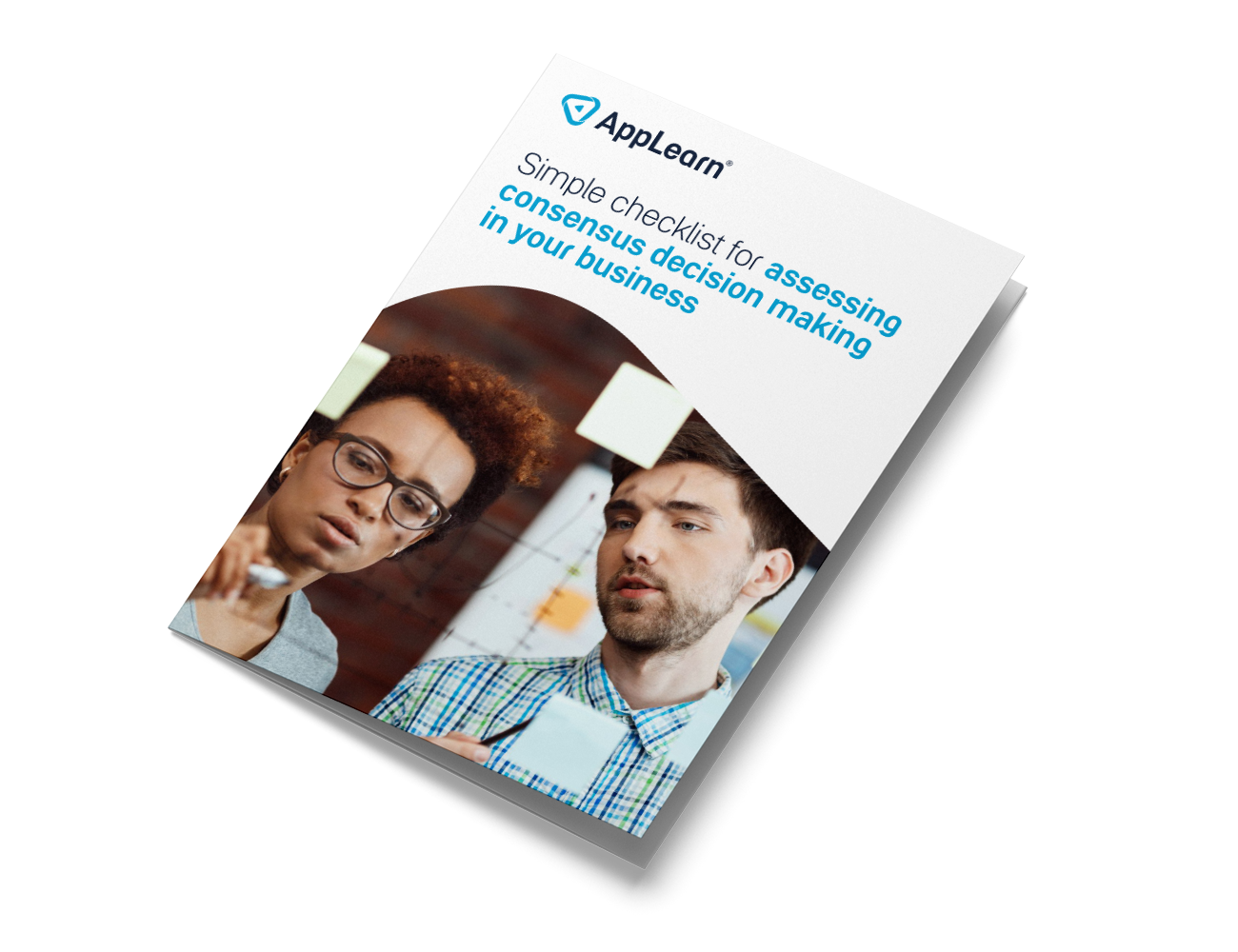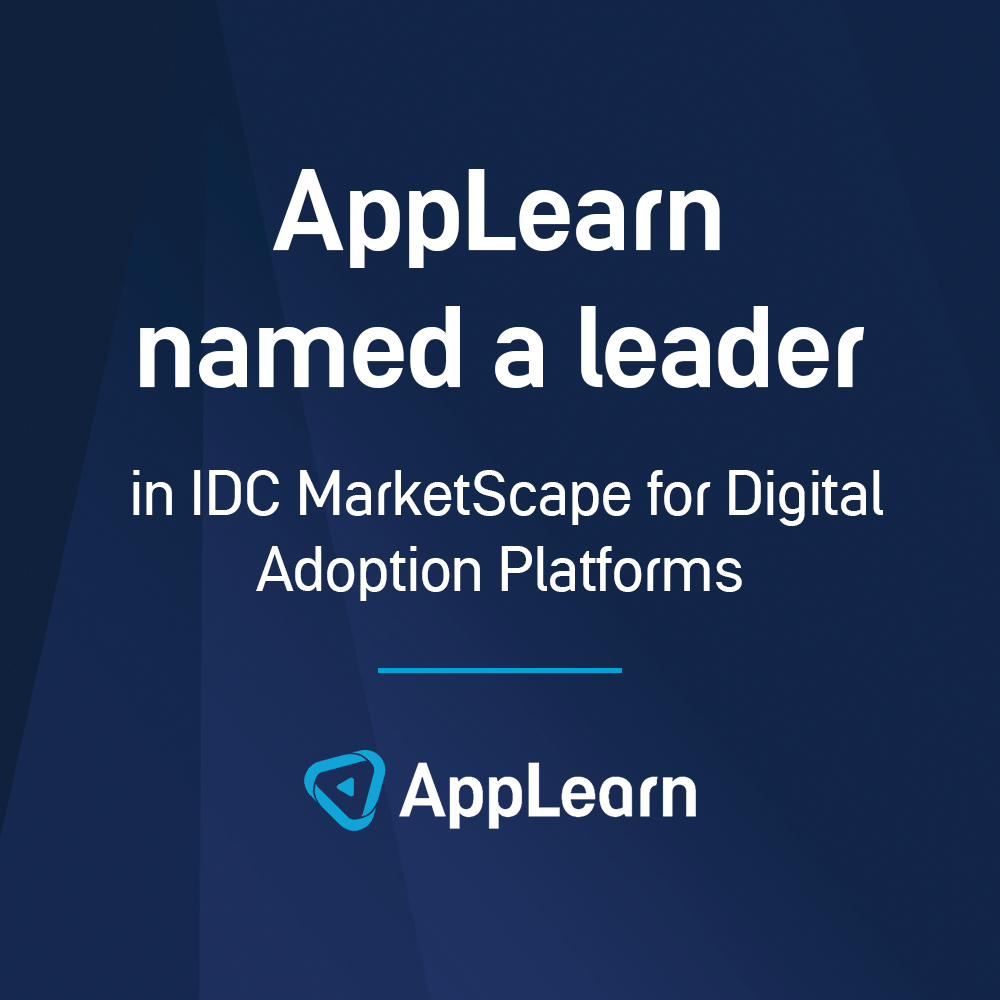Consensus decision-making buying guide in B2B technology
1. What is consensus decision making and why is it taking place now?
Consensus decision-making describes a pivotal shift in how businesses are beginning to operate and innovate. In essence, it's a collaborative approach where multiple stakeholders, including executives, engineers, product managers, and even customers, come together to make critical decisions.
This inclusive method ensures that the diverse perspectives and expertise of all parties are taken into account and heard and included in the process, leading to more well-rounded and informed choices.
Advancing technology needs multiple minds
Consensus decision-making has gained a marked build-up momentum due to the relentless pace of technological advancement and the increasing complexity of the tech industry, with innovations constantly reshaping the corporate landscape.
As multiple stakeholders can bring different perspectives, from technical feasibility to market demands and ethical considerations, each one is essential in our modern, tech-driven world.
New technologies affect the entire organization
Whereas decisions made in isolation can lead to costly mistakes or missed opportunities, consensus decision-making encourages transparency, fosters trust, and leverages a team’s collective wisdom.
Moreover, technology is no longer confined to the IT department; it has permeated every facet of business operations. Digital transformation initiatives - driven by the need for agility and competitiveness - touch all departments.
As a result, decisions concerning new technologies have far-reaching consequences for the entire organization. They can determine the success or failure of new product launches, impact customer satisfaction, and disturb the bottom line. Consensus decision-making recognizes these interdependencies and aligns the entire business toward common goals.
2. Identifying your digital adoption stakeholders – who are they, and why do they care?
In an area as crucial as digital adoption, consensus decision-making provides the best chance for organizations to arrive at solutions that maximize all operational areas.
For the approach to work optimally, stakeholders involved in critical decision-making processes must be identified, and the reason why they care about effective digital adoption understood.
Here are some key stakeholders you should consider and why effective digital adoption matters to them and their teams:
HR:
HRIS (Human Resource Information Systems) platforms have become prevalent across HR departments and enable various functions and processes to be managed. These include employee data management, payroll, benefits admin, recruitment, performance management, and employee self-service.
HR leaders have a vested interest in strong digital adoption because without it, HRIS platforms can lead to:
- Difficulty providing user support: Typically, everyone in an organization has access to the HRIS. Inevitably, this often leads to high volumes of user support requests, including FAQs, which should be self-served.
- Intrusive user training: The time taken to train all users on the software can become intrusive to the workday, a problem compounded by the fact that around 70% of training is forgotten within 24 hours.
- Low user adoption: HRIS platforms often experience high user resistance.
- Poor data entry capabilities: Difficulties in entering data to HRIS platforms can lead to poor data quality and extensive re-work, impacting efficiencies and reporting.
- Damaged employee experience: Collectively, these pain points result in damaged user experiences of HRIS platforms.
Learning and Development:
L&D departments are responsible for designing and implementing learning strategies, managing training programs, and developing employees’ skills and knowledge within an organization.
As technology continues to advance and touch every area of an organization, L&D leaders need to see high rates of digital adoption to accomplish:
- Modern expertise: DAPs allow leaders to remain continually up-to-date with the latest L&D developments and best practice.
- Higher digital adoption: By mastering learner engagement, L&D leaders can increase overall employee engagement and technology adoption.
- Digital Transformation: Transforming learning for the digital age allows L&D departments to move away from inefficient legacy approaches.
- Heightened Employee Experience:
By adapting high-quality learning to workflows without interruption, learning is made more relevant to each role within the organization.
- A Developed Future of Work Strategy: The building of a culture based on continuous learning and the embracement of digital channels supports learning within hybrid work environments.
- Enhanced employee productivity: Data is critical to L&D. With the right training delivered at the right point to the right person, user engagement and productivity increase while dependency on IT support decreases.
Sales:
CRM (Customer Relationship Manager) platforms manage an organization's interactions and relationships with its customers. Particularly used by sales, they are also commonly used by marketing and customer service functions.
Sales leaders care about digital adoption levels because where it is lacking, risks accumulate, including:
- Low user adoption: When CRM platform adoption and engagement are lacking, it can lead to incomplete or inaccurate data, missed opportunities, and decreased productivity.
- Poor data quality: If low competence with CRM platform usage is common, employees can end up entering data correctly, thereby impacting marketing campaigns, sales forecasting, and customer service.
- Inadequate training and support: Both can lead to confusion, frustration, and underutilization of features, resulting in missed opportunities to enhance customer interactions and optimize sales processes.
IT:
IT leaders often have a varied scope across the application estate. However, a typical IT Service Management ITSM team will design, plan, and operate an organization’s IT services, such as incident, problem, and change management, service desk operations, and support.
As a function, IT is commonly impacted by high volumes of support tickets and the strain that comes from numerous users asking for help and guidance. With no digital adoption strategy in place, IT teams are hampered by:
- Onerous Support tickets: When multiple users come to the IT department requesting help that could be provided via a DAP, teams are taken away from more mission-critical, value-adding tasks.
- Low user adoption: Critical IT transformation projects can be impaired by insufficient user training and support.
Digital Leaders:
Your digital leaders are on the front lines of digital adoption. Responsible for implementing and maintaining digital tools and platforms, their primary concern is the seamless integration and performance of these technologies so that they can generate maximum returns.
With a clear and obvious incentive to boost digital adoption, where it is achieved, digital leaders benefit from:
- High user adoption: By ensuring the organization's digital applications are adopted by employees, wasted spend is kept to a minimum and often eliminated altogether.
- Improved digital employee experience: Improving UX is a crucial aspect for digital leaders as it allows for seamless multi-app journeys and consistent support across the tech stack.
- Boosted productivity and efficiency: More mission-critical and value-adding tasks can be accomplished by reducing time spent on training and troubleshooting.
- Enhanced ROI: By ensuring that users employ the full functionality of their software and that nothing 'sits on the shelf,' digital leaders can maximize the value of software investments.
- Smoother digital transformations: High digital adoption ensures successful digital transformations and that software investments are neither wasted nor cause issues.
Finance:
ERP (Enterprise Resource Planning) platforms integrate and manage various core business processes, helping to streamline functions such as finance, accounting, human resources, supply chain management, inventory management, and manufacturing.
As finance, in particular, is so critical to an organization's survival and its ability to thrive, finance teams need high levels of user digital adoption to avoid:
- Platform complexity: ERP platforms tend to be complicated, with various modules and customizations required. The subsequent steep learning curves mean users can find it challenging to navigate the system, leading to poor data entry, lost time, and significant investments in support and training.
- Poor data quality: As a core business unit, inaccurate financial data entry can have a considerable impact on business operations, leading to higher costs and lost productivity.
- Onerous user support and training: The complex nature of ERP platforms routinely demands extensive support and training costs.
Procurement:
Procurement software is a type of ERP that automates and streamlines the procurement process. It includes functionality to support various activities, including vendor management, supplier sourcing, purchase requisitions, purchase orders, and contract management.
Procurement leaders are crucial digital adoption stakeholders and need solutions that can help them get around:
- Platform complexity: Procurement ERP users may struggle to use the complex software effectively, resulting in errors, delays, and inefficiencies in the procurement process. This can lead to increased cycle times, missed saving opportunities, and decreased productivity.
- Poor data quality: Where user incompetence leads to poor data entry, outcomes can include incorrect purchasing decisions, inaccurate reporting, and inefficiencies in supplier management.
- Onerous user support and training: The complex nature of procurement ERP platforms can require extensive support and training costs.
- Low user adoption: Low user adoption hinders the ability to standardize processes, capture data insight, and achieve procurement efficiencies.
GRC:
Governance, Risk, and Compliance functions help organizations manage and monitor their adherence to legal, regulatory, and internal policies by providing tools for risk assessment, policy management, compliance tracking, and reporting.
The applications used within GRC teams are often complex, and leaders need improved digital adoption to prevent:
- Data inaccuracies: Data quality is crucial to GRC functions. As GRC functions make risk assessment and auditing decisions using data fed into and processed by their applications, data quality is critical. Poor data risks non-compliance, and the receipt of heavy fines.
- Platform complexity: With users needing to navigate various workflows and compliance frameworks within GRC applications, errors, inefficiencies, and gaps in compliance efforts become commonplace. This can lead to regulatory violation, increased risk exposure, and potential legal consequences.
3: What is a digital adoption platform (DAP)?
With rampant digitization changing the face of work, organizations of every type and size find themselves walking a tightrope. They must adopt new software and applications in order to flex with market shifts, but they must also ensure that each investment delivers measurable value.
However, when the number of digital tools and applications that employees must use on a daily basis becomes overwhelming, the tightrope begins to fray. Presented with multiple unfamiliar interfaces, each with different levels of usability and navigability, employee morale can slump, and with it, productivity. Elsewhere, data that cannot be mined and transformed into actionable insights impairs progress and suppresses technology’s potential to promote growth.
It is from the reality of this situation that DAPs have surfaced as a formidable and pervasive solution.
One interface to rule them all
Using just one interface that connects different applications across a straightforward support experience, DAPs provide employees with comprehensive in-app guidance that allows instant access to the latest technical support.
Yet, DAPs are more than a helpful in-app guidance tool. With their full capabilities exploited, they can:
- Simplify complex change management projects
- Support the move to remote or hybrid working models
- Enable data-driven decision-making
- Promote organizational cultures steeped in learning
- Unleash the maximum ROI of new technologies
A new way to train
When organizations needed to train their workforce on new software or applications in the past, there were three options available:
1. Arrange in-person training sessions
Although such sessions can provide adequate learning opportunities, the human attention span is short within legacy teacher-learner dynamics. Any new knowledge is soon forgotten unless it is bolstered by regular practical activities.
2. Produce training resources
Training resources can standardize practice, but when created for an area as rapidly evolving as technology, they age quickly. They are also regarded as an unattractive use of time to employees as navigating them disrupts workflows and impacts productivity.
3. Leave employees to figure it out for themselves
Not only does this approach create a sizeable risk of employees misusing technology, but most would prefer to simply get on with their jobs without becoming mired in unfamiliar interfaces and user experiences. Uniting the three options is their collective inability to supply metrics that allow leaders to reliably determine which software is being used and to what degree of competency.
DAPs as a fourth option
By accessing extensive in-app guidance through a single pane of glass, your people are instantly offered the most up-to-date help presented in the most understandable terms. Pop-ups can be configured to appear on screen and react to user issues in real-time, existing resources can be placed into workflows, a range of metrics can be targeted, such as average task completion times, and the employee need to learn multiple interfaces is eliminated.
Effectively, each employee has their own personal training guide who walks them through unfamiliar software and application features. The result is rapidly enhanced competency levels, which significantly boosts productivity.
4. Digital adoption journey – where do I start?
Embarking on a digital adoption journey can be an exciting, if not daunting, prospect. The benefits are clear – increased efficiency, improved user experiences, and a competitive edge in an increasingly digital world.
However, the path to successful digital adoption can be complex, with numerous stakeholders and technologies involved. So, where do you start, and how do you ensure a smooth journey?
The Role of Digital Adoption Platforms
DAPs are primed to kickstart your digital adoption journey, designed as they are to simplify the process of introducing and integrating new digital tools and applications into your organization.
Here are a few areas they can provide considerable support:
Onboarding and Training:
DAPs excel at onboarding and training users. By providing in-app guidance, step-by-step walkthroughs, and interactive tutorials, users quickly become proficient with the technology. This is invaluable, especially when dealing with complex software.
Identifying Stakeholders:
DAPs can help you identify and engage with your various stakeholders. By analyzing user interactions and behavior, DAPs provide insights into who is using the software and where they might be facing challenges. This knowledge is crucial for tailoring your digital adoption strategy.
Personalization:
DAPs can customize the user experience, delivering contextual guidance based on individual roles and preferences and ensuring each user receives the support they need. Such personalization enhances user engagement and reduces frustration.
Monitoring and Analytics:
DAPs come equipped with analytics and monitoring capabilities, tracking user interactions, adoption rates, and areas where users might struggle. This data is essential for making data-driven decisions and continuously improving the digital adoption process.
Defining Your Digital Adoption Roadmap
With the role DAPs can play established, we can look at the steps needed to define your digital adoption roadmap.
1. Assess Your Current State: Start by evaluating your organization's current digital landscape. Identify the software applications in use, the stakeholders involved, and any pain points or challenges faced in adoption.
2. Set Clear Objectives: Define your digital adoption objectives. What specific outcomes do you want to achieve? Whether it's increasing user engagement, reducing support requests, or improving overall efficiency, clear objectives are vital.
3. Identify Stakeholders: As discussed in previous sections, it is essential that you recognize your digital adoption stakeholders, understand their motivations, and address their concerns regarding digital adoption.
4. Choose the Right DAP: Select a Digital Adoption Platform that aligns with your organization's needs and goals. Look for features that support onboarding, training, personalization, and analytics.
5. Design a Customized Plan: Develop a tailored digital adoption plan considering your organization's unique challenges and objectives. Consider the needs of each stakeholder group and how the DAP will address them.
6. Implementation and Training: Roll out the DAP and provide training to your internal teams responsible for managing it. Ensure that they understand how to leverage the platform effectively.
7. Monitor and Adjust: Continuously monitor the adoption process using the DAP's analytics. Identify areas for improvement, make necessary adjustments, and refine your digital adoption strategy.
Through the implementation of a DAP and by following these steps, your journey towards successful digital adoption will be much smoother.
Remember, it's not just about adopting new technology; it's about ensuring that your organization can harness its full potential, and there are few allies more valuable than DAPs in achieving this goal.
5. Checklist: addressing consensus decision making in your business.






